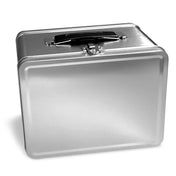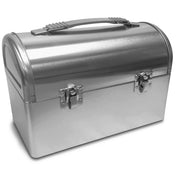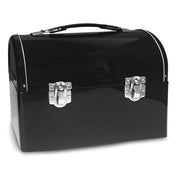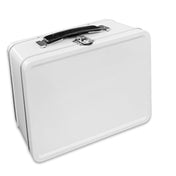I made my own school lunches as far back as I can remember. Our son — a six-year-old with mild cerebral palsy who can't stand at the kitchen counter without help yet — has neither the interest in food nor the physical ability to do much of the chopping, spreading, and packaging a school lunch entails.
But the more I chat with other parents, the more I realize it's a plight that extends far beyond palsy; fridge foraging is a skill that all kids have to learn. So as Graham starts first grade, we are starting the slow, necessary transition toward lunch-making independence.
And it all comes down to how we organize our kitchen. Will he make his own lunch by the end of the school year? I highly doubt it. But our refrigerator reorganization means he can grab his own snacks, pick out raw fruit and vegetables, and help me start a sandwich — which is a step in a more independent direction for a kid of any ability.
Here's what I do:
A Kid's-Eye View
No matter what style of refrigerator you have, it's important to remember who is peering into it besides you — i.e., little people. Putting the things that may go into lunches (yogurts, fruit, vegetables, and sandwich-making supplies) at eye level translates to one less call of "Mom! I can't find the bread!" and one more step toward independent lunch making.
Chop Chop
Whenever possible, I cut and slice (or otherwise prepare) fruits and vegetables in advance so they're ready for packing or snacking. This means I spend more time putting away our food when I get groceries, but less time when it comes to lunch making. When I ask Graham to look inside the refrigerator to choose what he wants for lunch, there's usually a healthy, colorful option staring him in the face; sliced bell pepper looks more identifiable to him as a great lunch option than a whole pepper, for example.
And every time Graham makes nutritious choices on his own means one less time I'm nagging him to eat well. As he gets older, I'll have him begin chopping things himself.
Snag a Snack Spot
I'm not totally anti-packaging; I love having snacks around that are instant, portable, and at least not completely devoid of nutritional value. I keep two bins filled with kid-friendly snacks (like applesauce, raisins, crunchy seaweed snacks, plain popcorn, nuts, fruit leather, and yogurt-covered pretzels) in a low cupboard that Graham can access easily. Because he seems to like having a spot for "his" food, he participates in choosing one thing from the bins each day for his morning snack at school. And that's one less thing on my plate.
At the Ready
Anticipate the things your kids will have trouble doing themselves. If your third-grader can do everything involved in lunch making except reach the cutting board, consider putting the cutting board in a new place. Plan for success by altering your kitchen to make it more kid-friendly.
Input, Please
Asking your kid for lunch-making input — even though it means you may have to say no to some requested items — gives them a well-deserved say in the process. And ultimately, it gives them an opportunity to take pride in what comes into the cafeteria. But by putting snacks in reachable spots and packing produce in the right way, I can give Graham a say in what goes in his lunch — saving me time in the morning and making him more interested in his food at lunchtime. What do you do to encourage your kids to help?
Original article by Jess Thomson appears on The Kitchn.
Photo also by Ayma / Adobe






